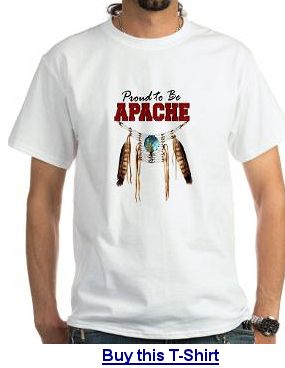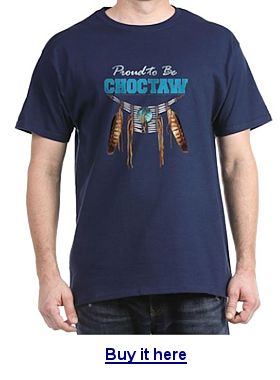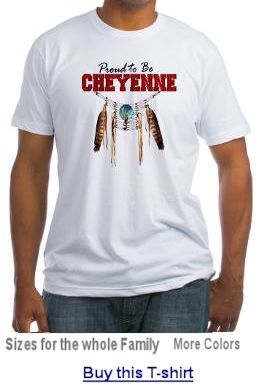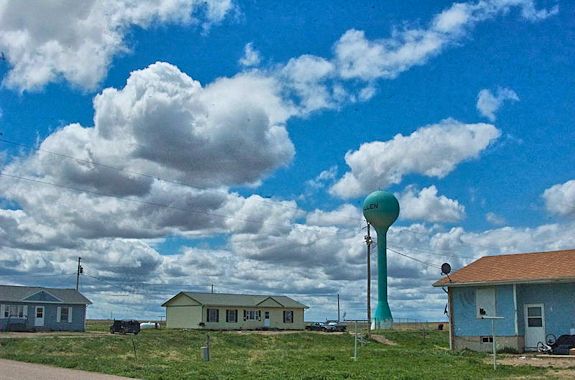Although closely related to and only a couple of miles distance from Santa Ysabel, the Mesa Grande Band of Diegueno Mission Indians is a group that cherishes a singular independence.
US Tribes A to Z (Federally Recognized)
US Tribes A-Z
Indigenous peoples in what is now the contiguous United States are commonly called “American Indians”, or just “Indians” domestically, but are also often referred to as “Native Americans”. In Alaska, indigenous peoples, which include Native Americans, Yupik and Inupiat Eskimos, and Aleuts, are referred to collectively as Alaska Natives.
Native Americans and Alaska Natives make up 2 percent of the U.S. population, with more than 6 million people identifying themselves as such, although only 1.8 million are recognized as registered tribal members. Tribes have established their own rules for membership, some of which are increasingly exclusive. More people have unrecognized Native American ancestry together with other ethnic groups. A minority of U.S. Native Americans live in land units called Indian reservations. Some southwestern U.S. tribes, such as the Yaqui and Apache, have registered tribal communities in Northern Mexico. Similarly, some northern bands of Blackfoot reside in southern Alberta, Canada, in addition to within US borders.
A number of Kumeyaay communities may be found in Baja California del Norte.
Indian tribes are unique legal entities in the United States and are distinct political communities with extensive powers of self-government. Tribal sovereignty predates the U.S. government. Treaties, federal statutes and executive agreements over the past 200 years have established a special trust relationship between tribes and the federal government. The federal Bureau of Indian Affairs (B.I.A.) has been designated by the Secretary of the Interior as the primary agency to protect tribal interests and administer trust responsibilities.
Federal Tribes (F)
Federal tribes followed by (F) have recognition by the US. Government. Recognized Indians are those who are enrolled members of tribes from whom the federal government has acknowledged treaty or statutory obligations. There are 566 federally recognized indian tribes (as of January 14, 2015).
State Tribes (S)
State tribes marked with an (S) have recognition at the state level, but may or may not have federal recognition by the US Government.
Terminated Tribes (T)
During the 1950s, in a move to assimilate Native Americans into mainstream America, the U.S. government ended federal trusteeship of roughly three percent of the country’s Native American population through a process called termination. Of the terminated tribes, 62 were native to Oregon and 41 were in California. Others were in Kansas, Minnesota, Montana, Nebraska, New York, North Dakota, Utah, and Wisconsin. Even though the tone of the termination legislation was emancipation, the net effect of the policy on terminated tribes was cultural, political and economic devastation. In recent years, however, vigorous efforts have been mounted by terminated tribes to reestablish or restore the trust relationship. Terminated tribes are marked with (T).
UnRecognized Tribes (U)
Un-recognized tribes marked with (U) are historical indian tribes or people with Indian ancestry who are not recognized by either the Federal Government or any state government entity. Unrecognized Indians include those from tribes with whom federal relations have been severed by congressional action (termination) and those whose tribe has never been recognized by the federal government. They also include persons of indian ancestry who, for fear of persecution, fled or hid their Indian ancestry during the time the early Indian Rolls were being taken in the mid to late 1800s and early 1900s.
Petitioning Tribes (P)
Many of the Terminated Tribes and Unrecognized tribes are today petitioning to again be recognized as tribal governments with sovereign nation status or to be included in tribes they were previously terminated from. Those petitioning tribes are marked with a (P), where known. Inclusion on this site does NOT mean an endorsement has been made for recognition of any particular tribe. All entities claiming to be US indian tribes that we are aware of have been included for completeness. Where known, we have indicated official tribal status with our Key Chart. In many cases we have not verified the validity of the claim of tribal status, and leave it to your own common sense or further research to validate tribal claims.Alternate names in parenthesis are either older names that were once used to identify that tribe, shortened common names, or they are misspellings.
Most Recent Articles:
The Mescalero Apache tribe formed a part of the Faraones and Vaqueros of different periods of the Spanish history of the southwest. Their principal range was between the Rio Grande and the Pecos River in New Mexico, but it extended also into the Staked plains and southward into Coahuila, Mexico.
Miami Tribe of Oklahoma
23 ViewsThe Miami Tribe of Oklahoma is the only federally recognized Native American tribe of Miami Indians in the United States.
Miccosukee Tribe of Indians
23 ViewsBrief Summary:
Brief Summary:
Minnesota Chippewa Tribe
23 ViewsWho are the Minnesota Chippewa Tribe?
The Minnesota Chippewa Tribe is a federally recognized political union of six Ojibwe bands, including the Mille Lacs Band, Bois Forte Band, Fond du Lac Band, Grand Portage Band, Leech Lake Band, and White Earth Band. There are Ojibwe communities in both Canada and the United States. In Canada, they are the second-largest population among First Nations, surpassed only by the Cree. In the United States, they have the fourth-largest population among Native American tribes, surpassed only by the Navajo, Cherokee and Lakota.
Mississippi Band of Choctaw Indians
23 ViewsThe Mississippi Band of Choctaw Indians was native to the Southeastern United States and members of the Muskogean linguistic family, which traces its roots to a mound-building, maize-based society that flourished in the Mississippi River Valley for more than a thousand years before European contact.
Texas Band of Choctaw Indians
23 ViewsBrief Summary
The Moapa Band of Paiute Indians are Southern Paiutes. They were relocated to to the Moapa area in 1869. Originally the entire Moapa River watershed and lands along the Colorado River (some of which area is now under Lake Mead) was assigned to the Moapa; however, in 1875 their reservation was reduced to 1,000 acres (4.0 km2).
Modoc Tribe of Oklahoma
23 ViewsThe Modoc Tribe of Oklahoma territory was as much in present-day Oregon as in California. Their language and customs were closely related to the Klamath people, who lived in Oregon, and some Modocs share another reservation with the Klamath people in Oregon. The Modoc did, however, occupy a part of California that is today known as Modoc County. They also shared some customs with the Shasta to the west, and with the Achumawi to the south.
When European settlers arrived in this region, the Mohegan and the Pequot were one tribe, living under the rule of Sassacus. Later Uncas, a subordinate chief, rebelled against Sassacus and assumed the leadership of a small group on the Thames River near Norwich. This group was known as the Mohegan. Today they are the Mohegan Tribe of Indians of Connecticut.
The Mooretown Rancheria of Maidu Indians of California is a federally recognized tribe of Concow and Maidu people. Concow people are the northwestern or foothill branch of the Maidu people.
Morongo Band of Mission Indians
21 ViewsThe Morongo Band of Mission Indians is a federally recognized tribe of primarily Cahuilla and Serrano peple. Tribal members also include Cupeño, Luiseño, and Chemehuevi Indians.
Muckleshoot Indian Tribe
21 ViewsThe federally recognized Muckleshoot Indian Tribe are a Lushootseed Native American tribe, part of the Coast Salish peoples of the Pacific Northwest. They are composed of descendants of various tribal groups who inhabited Central Puget Sound and occupied the Green and White River drainages from the rivers’ confluence in present-day Auburn to their headwaters in the Cascades.
Narragansett Indian Tribe
23 ViewsThe Narragansett Indian Tribe of Rhode Island were a water-going people capable of building dugout canoes that could hold as many as 40 men.
Navajo Nation
23 ViewsThe Navajo Nation is the largest indian tribe in the United States, with over 250,000 enrolled members and also has the largest indian reservation, covering approximately 27,425 square miles (71,000 km2). The Navajo also have the most complex tribal council, with 88 council delegates representing 110 Navajo Nation chapters (communities).
Nez Perce Tribe
23 ViewsThe Nez Perce Tribe is one of five federally recognized tribes in the state of Idaho. Their most famous chief is Chief Joseph.
Nisqually Indian Tribe
23 ViewsThe Nisqually Indian Tribe of the Nisqually Reservation is a federally recognized tribe of Nisqually people. They are a Coast Salish tribe of the Pacific Northwest.
Nooksack Indian Tribe
23 ViewsThe Nooksack Indian Tribe is a federally recognized Salish tribe near the Northwest Coast in northern Washington State located about 15 miles from the Canadian border. Their oral history says they have resided there since time immemorial.
Brief Summary:
The North Fork Rancheria of Mono Indians of California is a federally recognized tribe of Western Mono Indians, whose traditional homeland is in the southern Sierra Nevada foothills of California.
Northwestern Band of Shoshoni Nation
23 ViewsBrief Summary:
The Nottawaseppi Huron Band of the Potawatomi received federal recognition in 1995 by Congressional legislation.
Oglala Sioux Tribe
63 ViewsThe Oglala Sioux Tribe is a federally recognized indian tribe who are members of a major Sioux division known as the Western or Teton Sioux. The Lakota are the westernmost of the three Siouan language groups. The tribe prefers to be known as the Oglala Lakota Nation.
Ohkay Owingeh
23 ViewsOhkay Owingeh is an Indian pueblo and census-designated place in Rio Arriba County, New Mexico. This pueblo was founded around 1200 AD. These pueblo people are from the Tewa ethnic group of Native Americans.
Omaha Tribe of Nebraska
25 ViewsThe Omaha are a federally recognized Native American tribe which lives on the Omaha Reservation in northeastern Nebraska and western Iowa. They migrated to the upper Missouri area and the Great Plains by the late 17th century from earlier locations in the Ohio River Valley. The Omaha tribe were the first tribe on the Northern Plains to adopt an equestrian culture.
Oneida Nation of New York
23 ViewsBrief Summary:
Oneida Tribe of Indians of Wisconsin
23 ViewsBrief Summary:
Onondaga Nation
23 ViewsBrief Summary:
Osage Nation
23 ViewsThe Osage Nation is a federally recognized Midwestern Siouan-speaking tribe in the United States that originated in the Ohio River valley in what is present-day Kentucky. They were eventually removed to Indian Territory in Oklahoma, where their reservation is today.
Ottawa Tribe of Oklahoma
23 ViewsBrief Summary:
Otoe-Missouria Tribe of Indians
23 ViewsBrief Summary:
Paiute Indian Tribe of Utah
23 ViewsBrief Summary:
Bishop Paiute Tribe
23 ViewsHome :: US Tribes A to Z :: US Tribes A-B :: Bishop Paiute Tribe
The Bishop Paiute Tribe is a federally recognized indian tribe in California, located at the foot of the Eastern Sierra Nevada Mountains. They are the fifth largest tribe in California with around 2,000 enrolled members.
The Paiute people who live on the Bishop Paiute Reservation are descendants of the “Nu-Mu”, the original people of the Owens Valley.
The Paiute-Shoshone Tribe of the Fallon Reservation and Colony is a federally recognized tribe of Northern Paiute and Western Shoshone Indians in Churchill County, Nevada.
Lone Pine Paiute-Shoshone Tribe
22 ViewsThe Lone Pine Paiute-Shoshone Tribe is a federally recognized tribe of Mono Paiute and Timbisha Shoshone located near Lone Pine in Inyo County, California.
Many of the Pala Band of Luiseno Mission Indians trace their heritage back to the Cupa. Today, more than 90 years after having been expelled from their native homeland, the Cupenos call Pala, California home and live as one among the Luiseno tribe.
Pascua Yaqui Tribe of Arizona
23 ViewsBrief Summary:
The Hill Nomlaki and River Nomlaki were the two major divisions of Nomlaki Indians in California. The Paskenta Band of Nomlaki Indians are Hill Nomlaki occupying the territory east of the Coastal Range now known as Tehama and Glenn Counties.
Passamaquoddy Tribe
23 ViewsThe Passamaquoddy Tribe belonged to the loose confederation of eastern American Indians known as the Wabanaki Alliance, together with the Maliseet, Mi’kmaq, Abenaki, and Penobscot Indians. The Passamaquoddy live primarily in Maine, although there is also a band of a few hundred Passamaquoddy people in New Brunswick.
Brief Summary:
Pawnee Nation of Oklahoma
23 ViewsThe Pawnee Tribe of Oklahoma are the original people of what is now Nebraska and northern Kansas. They were forced to move to a reservation in Indian Territory, Oklahoma in 1876.
Brief Summary:
Penobscot Nation
23 ViewsThe Penobscot tribe, together with the Mi’kmaq, Maliseet, Passamaquoddy, and Abenaki Indians, were once members of the old Wabanaki Confederacy, enemies of the Iroquois. These allies from the eastern seaboard region spoke related languages, and “Abenaki” and “Wabanaki” have the same Algonquian root, meaning “people from the east.” The Penobscot are not affiliated with the Abenakis today, and distance themselves from the Abenaki of New England.
Peoria Tribe of Indians of Oklahoma
23 ViewsBrief Summary:
The federally recognized Picayune Rancheria of Chukchansi Indians of California have always lived in California. During the years after the Gold Rush (1849) anthropologists visited the land of the Chukchansi. They grouped California Tribes together by their languages; hence, the Chukchansi are grouped with approximately 60 other Tribes in the greater Central Valley.
Pinoleville Pomo Nation
23 ViewsThe Pinoleville Pomo Nation is a federally recognized tribe of Pomo people in Mendocino County, California. They were originally a Pomo villiage that resided in the Ukiah Valley, and were just one of the many Pomo tribes in California.
Pit River Tribe
23 ViewsWho are the Pit River Tribe?
The Pit River Tribe is a federally recognized tribe of eleven bands of indigenous peoples of California.
Poarch Band of Creeks
23 ViewsThe Poarch Band of Creeks descends from Muscogee Creek Indians who sided with the United States in the Creek War of 1813–1814. Many Creeks remained in Alabama despite the Indian Removal Act of 1830. They are recognized by the Federal Government.
Pokagon Band of Potawatomi Indians
23 ViewsThe Pokagon Band of Potawatomi Indians have occupied southern Michigan, northern Indiana, northwestern Ohio, north and central Illinois, and the shores of Lake Michigan in Wisconsin into the Dorr Peninsula for thousands of years.



